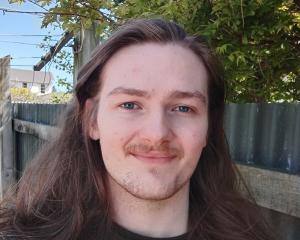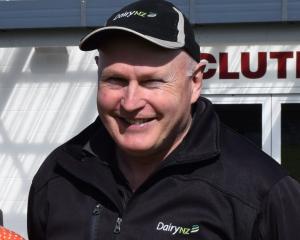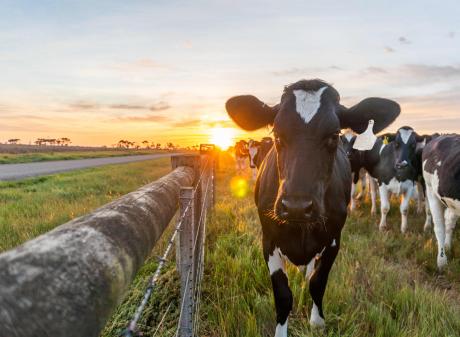
He paid $2.8 million to have a freestall barn and its infrastructure installed on his farm Riverside in Waikaka Valley in 2011.
The cost of the barn spurred a decision to maximise the performance of his business by starting to milk his cows in winter.
"The minute you build a barn you’ve got to pay for it. Milk is money," he said.
The barn has an Environment Southland consent to store and apply the effluent of 600 cows.
"The best animal to keep inside it is a highly productive one," he said.
Cows were milked twice a day, every day of the year.
A target was set for each cow to produce 650kg of milksolids in 305 days. The target had been achieved the past four years, he said.
His family decided to supply Mataura Valley Milk rather than Fonterra this year. Their year round supply better suited Mataura Valley’s direction, he said.
He dedicated his life to being productive to realise a boyhood dream of farm ownership.
"My life has been about productivity."
Once you were dedicated to being a productive farmer and the long hours it required, it became second nature, he said.
"Being productive is quite taxing, physically and mentally, but it has its rewards."
The physical impact on his body to earn the money to achieve the dream, particularly shearing and fencing, had shown as he got older.
"I’ve got quite significant wear and tear."
He was once against spending money on technology to do a task he could do manually.
A broom was once used to push feed in the barn towards his cows to eat.
Shoulder surgery and arthritis in his hands changed his mind and now a $30,000 automatic feed pusher does the job.
The feed the cows are given in the barn is a mix of dried distillers grain, fodder beet, grass silage, molasses and soy hulls.
Cows are fed wheat in the milking shed.
"When you are aiming for production, you’ve got to keep them eating."
Born and raised on market garden Peirce Orchard, in Millers Flat, he dreamed of one day buying a sheep farm.

At age 21, he took over the shearing run between Gore, Waikaka and Waikoikoi.
During his time shearing more than 50,000 sheep a year, he married Debbie Porter in 1987 and had four children — Bridgette, Melissa, Alex and Simon.
After seven years’ shearing, he saved $170,000.
Those savings could have bought three houses in Gore in 1991.
A 160ha farm cost about $600,000 excluding livestock.
A 65% deposit was required to get a mortgage, he said.
He went into an equity partnership to buy a nearly 670ha flat farm in Five Rivers for $800,000 in 1991.
Another $100,000 was loaned to buy 5000 sheep.
The partnership had about $600,000 and the former farm owner left $300,000 as vendor finance at a lower interest rate than the banks were offering.
"We were very lucky," he said.
The partnership paid $500 an acre.
From the sale of the farm in Five Rivers and capital gains, he bought 130ha sheep and beef farm Riverside, in Waikaka Valley, near Gore.
"We were out farming on our own."
To help pay his mortgage, he was shearing up to 20,000 sheep a year in the district.
He bought a nearly 180ha neighbouring sheep and beef property in 2002.
Riverside was nearly 390ha including leased land and ran 5000 sheep.
As lamb values were declining, they began wintering dairy cows to help pay the mortgage.
"The economics of sheep was an absolute battle," he said.
The productivity of the dairy sector spurred a decision to be among the first families in the valley to convert from sheep and beef in 2008.
After converting, he put Riverside on the market to prosper from dairy farms selling for $10,000 an acre.
Rather than selling the farm, they entered an equity partnership with another party.

Bridgette is now the business manager and Alex is the farmer.
As the herd was milked every day of the year, the eight staff including himself and two children were on a "normal" working week roster.
Being able to work with family was "the ultimate" and he felt very lucky.
Melissa was a vet technician and lived on farm and did scanning and calf rearing on Riverside.
The herd of Holstein Friesian cows were bred from a KiwiCross base.
Cows were run in two herds — late lactation and early lactation.
The future plan was to continue milking the best 600 cows of the 700 cows run on Riverside.
Sexed semen allows them to get heifer calves from their best cows.
He targets breeding black cows because he believes white cows were more prone to condition loss and health issues due to increased exposure to ultraviolet light.
Another aim was to buy more land to grow crop so they could stop buying feed in and become self-reliant. "We will just keep to the basics and do it well and keep productivity up."
Riverside dairy farm
Where: Waikaka Valley, near Gore
Size: 380ha.
Milking platform: 240ha
Run-off: 140ha
Peak cows milked: 600
Breed: Holstein Friesian
Milking shed: Herringbone
Milking: Twice-a-day every day
Production target: 650kgMS per cow
Winter barn: 600 cow freestall















